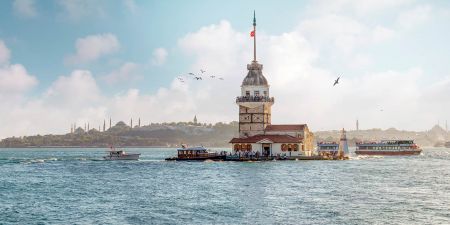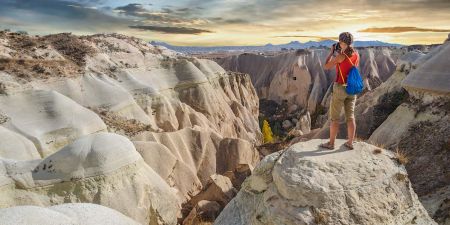-
Home
- Turkey
- Turkey Travel Information
- Museums
- Alacahoyuk Historic Site and Museum of Turkey
Alacahoyuk Historic Site and Museum of Turkey
One of the oldest settlements of human history, Alacahoyuk is found within the city of Corum. The primary Alacahoyuk museum opened in 1940.
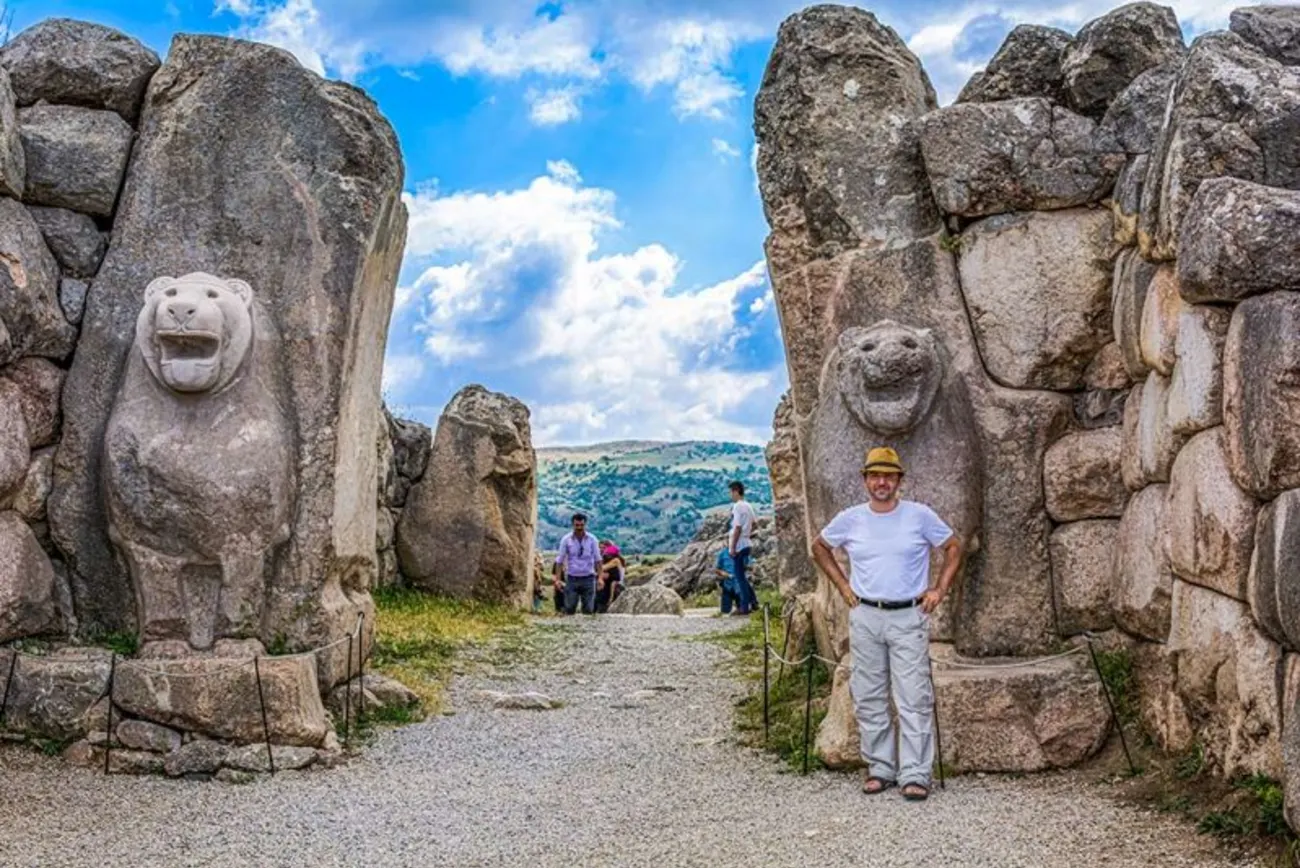
Alacahöyük is found 45 kilometers south of Çorum and 17 kilometers northwest of the Alaca township. The Alacahöyük village is 34 kilometres far away from Boğazköy and 210 kilometers removed from Ankara.
This tumulus, or mound, was first introduced to the planet of science by W.C. Hamilton in 1835, and afterward, it became an area frequented by scientists who visited Central Anatolia. In 1861, G. Perrot stopped this tumulus and discovered the plan of the square tower on the left and right of the door and one in every of the orthostats.
Meteoritic iron was transformed into a golden-handled dagger that welcomes tourists at the reception of Alacahöyük Museum. Such a special weapon, made over 4,500 years ago, is the best welcome to boundless marvels inside this amazing museum. The museum conserves the relics of one of the most fascinating Bronze Age settlements ever discovered. Although most of Alaca Höyük treasures are kept at Ankara's Museum of Anatolian Civilizations, the site itself remains a reminder of the history richness of the area.
Archaeological Discoveries at Alacahoyuk Historic Site
W. Ramsey, who made great contributions to Anatolia’s historical geography, studied the tumulus along with Wilson in 1881 and located some other reliefs. In 1893, E. Chantre came to the tumulus and located the square corridors among the sphinx, the second door at the top and therefore the door frames. Chantre studied the lions on the south of the door with the sphinx and believed that the inscription found on one of these doors was Phrygian writing.
Later H. Winckler, who had been working in Boğazköy since 1906, decided to begin a quest within the tumulus at the invitation of Makridi Bey and İstanbul Archaeology Museum Director Halil Ethem Bey. In 1907, Makridi Bey worked for 15 days at the door. After drilling some places within the tumulus, he saw the poterni (entrance) on the northern fringe of the tumulus, and he compared this to the potern in Boğazköy.
The primary systematic excavations of the tumulus were started by Atatürk within the Republican era. Hamit Zübeyr Koşay, Remzi Oğuz Arik, and Mahmut Akok from the Turkish History Institution began excavations in 1935, which lasted until 1983. The excavations were interrupted this year, and in 1997, they were started again by Professor Aykut Çınaroğlu.
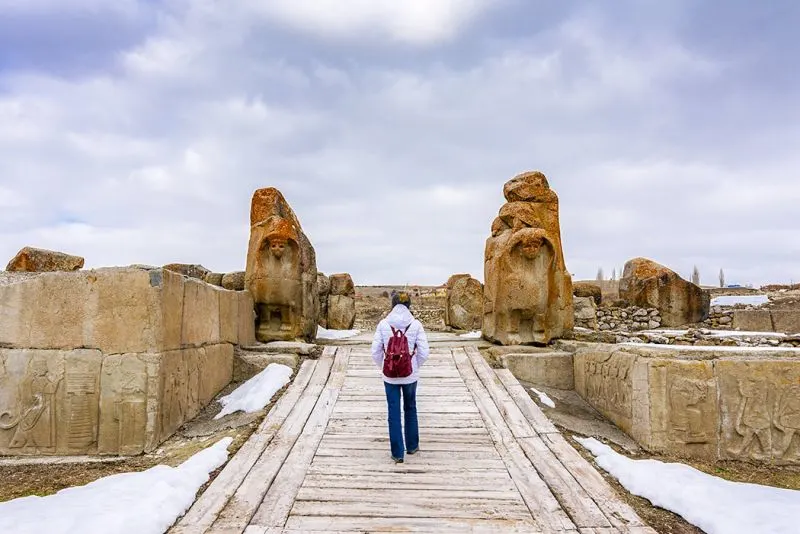
Kings’ tombs in Alacahoyuk Historic Site
There were 14 major kings’ tombs in Alacahöyük within the Old Bronze Age, which was developed by the Chalcolithic Age and was designed by four layers.
The tombs, which are believed to belong to layers five and seven, are located in a special area of the town. Thanks to their forms, these are considered to be unique tombs of Anatolia and even the Asian frontier. These tombs belong to adult men and women. Exploring these ancient burial sites adds a deeper historical dimension to your Turkey trip.
No children or babies were buried here. In contrast to the tomb types in Central Anatolia, in Alacahöyük there's uniformity within the direction of the tombs and also the buried people. The gifts buried together with the dead are the richest and most varied that are found within the Aegean and therefore the Asia frontier within the Old Bronze Age. Among these gifts are sun disks, deer and bull sculptures, decorative pieces, fighting tools like daggers, swords and axes, and other pieces made out of cooked clay, stones, gold, silver, bronze, and copper.
The architectural system of Alacahöyük within the Old Bronze Age trusted the authentic building technique of Anatolia. Buildings constructed using this method have stone foundations, sun-dried bricks, flat ceilings, plastered floors, and earth roofs. The Hittite layers that form the visible part of Alacahöyük are formed by three layers. During this age, a munition was formed within the sort of a circle with a diameter of 250 meters, and on this circle, two main gates that were the entrances to town are found. One among these entrances was the eastern door with a sphinx and also the door on the western side of the tumulus.
The heads are remarkable on the sphinx protomes that are carved on monolithic stone lentos. Sphinxes with inflated bodies continue on top of separated short legs. There's also a double-headed eagle carrying a rabbit in his claws within the interior side of the sphinx on the east. Alacahöyük stands among the many historical attractions in Turkey, alongside sites like Hattusa and Göbekli Tepe.
Customize Your Dream Vacation!
Get in touch with our local experts for an unforgettable journey.
Plan Your TripWalking Through the Alacahöyük Museum
The primary Alacahöyük museum that opened in 1940 moved to its present site 42 years later. The collection that occupies two floors of the museum building consists of the finds from the Alacahoyuk and Pazarlı archeological sites. We are sure that visitors would be noticeably curious about the Alacahöyük Museum during their tour, the gathering of which grows richer because the new archeological discoveries are made.
Ground-floor galleries
Hamit Zübeyr Kosay Hall greets curious minds at the entrance, its walls showing panels revealing Alacahoyuk's historical significance to Turkish archeology. Glass display cases hold precious excavation material, yellowed pages of scientific magazines unfolding decades of archaeological history.
Time slips by like water through these ground-floor corridors. Ancient artifacts line the walls in flawless chronological sequence, beginning with Chalcolithic remains and flowing smoothly into Early Bronze Age masterpieces. Each object is accompanied by learned understanding, turning inadvertent spectators into discerning witnesses.
Upper floor collections
Wooden steps lead to twin treasure rooms above. Remzi Oguz Arik Hall holds precious discoveries from the very first chapters of humankind - Chalcolithic tools side by side with Bronze Age masterpieces. The neighboring room, Mahmut Akok Hall, is dominated by breathtaking Hittite and Phrygian masterpieces, each having tales of long-lost craftsmen. Fresh discoveries add treasures to these sacred rooms. Treasures today exhibited by visitors include four eras' worth:
- Hattian masterpiece
- Hittite grandeur
- Phrygian brilliance
- Ottoman heritage
Modern minds transformed this trail in 2011 into pathways which, quite instinctively, draw people through epochs. Each gallery is now an epilogue, each exhibit a line in the great novel of the ancient societies of Anatolia, preserved with untarnished brightness for still-to-be-born generations.
FAQS
Q1. What is the significance of Alacahöyük Historic Site?
Alacahöyük is one of Turkey's most important archaeological sites, offering insight into the Hattian and Hittite civilizations. It was a major religious and political center during the Hittite Empire, featuring impressive sphinx gate reliefs, royal tombs, and remnants of advanced urban planning.
Q2. What can visitors see inside the Alacahöyük Museum?
The museum showcases artifacts excavated from the site, including Bronze Age royal tomb findings, Hittite sculptures, and Phrygian relics. Visitors can explore chronological displays of pottery, weapons, and decorative items, as well as learn about the site's excavation history through photographs and scientific documents.
Q3. What are the opening hours of the Alacahöyük Museum today?
The Alacahöyük Museum opens from 8:30 AM to 5:00 PM. Please note that the box office closes at 4:30 PM. It's advisable to verify these hours before planning your visit, as they may vary on special days or holidays.
Step into the ancient world at Alacahöyük Historic Site! Explore Turkey’s rich heritage with our exclusive Turkey travel packages.
Turkish Culture and Arts
Turkey Attractions
- Halicarnassus of Turkey
- Harput of Turkey
- Iotape of Turkey
- Knidos of Turkey
- Phaselis of Turkey
- Priene of Turkey
- Smyrna in Turkey
- Stratonikeia: Where Ancient Greek and Turkish History Meet
- Alacahoyuk: Why This Ancient City is a Must-Visit
- Anavarza: The Hidden Ancient City in Turkey’s History
- Aspendos: Turkey's Ancient Theater and Timeless Legacy
- Zeugma-Zeugma City of Turkey
- Kars- Ruins of Ani of Turkey
- Archaeological Site of Perge of Turkey
- Bodrum Telmissos of turkey
- Burdur Archaeological Site of Sagalassos of Turkey
- Hattusha Open-Air Museum of Turkey
- Kalkan Turkey: A Mediterranean Jewel Along the Turkish Coast
- The Sacred Ruins of Letoon: What Most Turkey Travel Guides Do not Tell You
- The Ultimate Visitor's Guide to Laodikea: Ancient Wonders & Practical Tips
- Miletus of Turkey: A Local's Guide to an Ancient Wonder
- Myra of turkey
- Your Essential Guide to Perge!
- Discover Phokaia in Turkey: A Local's Guide to This Ancient Turkish Treasure
- Manisa-Sardis of Turkey
- Patara: Where Roman Ruins Meet Turkey's Most Beautiful Beach
- Ancient Telmessos Turkey: Your Essential Guide to This Hidden Gem
- Xanthos: The Ancient Lycian Capital of Turkey
- Unveiling the Timeless Beauty of Hierapolis!
- Antalya Termessos of Turkey
- Exploring Limyra in Turkey: A Visitor's Guide to the Ancient Lycian City
- Discover Sagalassos: The Hidden Turkish Ancient City
- Must-Visit Assos in Turkey: Where Greek History Meets Turkish Charm
- Izmir-Pergamon of Turkey
- Adıyaman Nemrut of Turkey
- Aydın Aphrodisias of Turkey
- Cappadocia-Historical Places of Turkey
- Why Beyoğlu is Istanbul's Most Charming District
- Cumalikizik in Turkey: A Living Ottoman Museum
- Damlatas Caves in Turkey: A Natural Breathing Treatment in Turkey's Heart
- Demre in Turkey
- Karain Cave in Turkey
- Uludag in Turkey
- The Princes’ Islands in Turkey
- Discover Tortum Waterfall in Turkey: Your Guide to Turkey's Natural Marvel
- Belek in Turkey
- The Truth About Kas in Turkey: More Than Just Another Beach Town
- Sirince in Turkey
- Visiting Gocek in Turkey? Here's Everything You Need to Know First
- Stunning Spots the Historical Peninsula in Turkey: Complete Guide
- Alanya in Turkey
- The Blue Mosque (Sultan Ahmed Mosque)
- Your Guide to an Authentic Turkish Bath Experience in Istanbul
- Grand Bazaar Istanbul and Spice Bazaar
- Istanbul Aquarium
- Christmas in Turkey: Tourist places and a unique experience for Christmas
Religious Sites
- Bursa Great Mosque
- St. Paul’s Church
- Eshab Kehf Cave of the Seven Sleepers
- Eyüp Sultan Mosque: A Sacred Journey in Istanbul's Heart
- Süleymaniye Mosque: Essential Guide for Istanbul Visitors
- Virgin Mary Church Turkey: A Sacred Journey Through Time
- Basilica of St. John in Ephesus: Ancient Wonder Every Visitor Must See
- Discover the Hacı Bektaş Veli Complex: A Spiritual Legacy
- Hidden Treasure: The Church of St Pierre in Turkey
- Uncovering Ahlat, Turkey: The Hidden Gem of Lake Van
- Sanli Urfa Rizvaniye Mosque And Halil Ul Rahman Lake
- The Untold Story of Van-Akdamar: Turkey's Ancient Island Monastery
- Your Ultimate Guide to Noah’s Ark in Turkey
- Sultan Bayezid II Mosque Complex: The Remarkable Story of Istanbul's First Medical Center
- Hacı Bayram Veli Complex: The Hidden Story Behind Ankara's Most Sacred Mosque
- St. Nicholas Church Antalya: Ancient Secrets Behind Santa's True Home
- The Untold Story of Seljuk Mausoleums and Tombstones in Ahlat
- The Hidden Stories Behind Bursa's Green Mosque: A Visitor's Guide
- Haci Bektas Veli: The Hidden Story Behind Cappadocia's Spiritual Master
- Visitor's Guide to Twin Minaret Medrese Erzurum -Çifte: What You Need to Know Before Going
- Eskişehir Turkey: What Makes it Special
- Ancient Wonders: Your Journey Through the Cradle of the Saints in Hatay
- St. Peters Grotto in Hatay: The Hidden Story of World's First Christian Church
- The Hidden Story of Habibi Neccar Mosque: Antakya's Oldest Islamic Sanctuary
- İsparta St Paul Basilica Turkey: Hidden Treasures of Ancient Yalvaç
- Istanbul - Holy Tourism
- Visiting Mevlana Museum in Konya: More Local Secrets You Need to Know
- Konya - Mevlana Complex
- The Lost Treasures of Sardis ( Sart ) in Turkey: A Visitor's Guide to the Ancient Lydian Capital
- Discover Deyrulzafaran Monastery: A Sacred Journey Through Mardin's History
- St. Paul Church and Well: Your Guide to Turkey's Ancient Sacred Waters
- The Lost Martyrium of St Philip: Uncovering History in Hierapolis
- Harran: Turkey’s Ancient Gateway to Science and Faith
- Siirt-Tombs of Ibrahim Hakkı Efendi and HZ.Fakirullah
- Veysel Karani Complex (Siirt-Baykan)
- Sivas - Great Mosque and Hospital of Divrigi of Turkey
- Trabzon-Maçka Sumela Monastery of Turkey
Museums
- Asclepieion Ancient City in Pergamon of Turkey
- Hatay Archeology Museum of Turkey
- Aphrodisias Museum of Turkey
- Antalya Archaeological Museum of Turkey
- Burdur Archaeology Museum of Turkey
- Denizli Hierapolis Archeology Museum: Your full guide
- Hacı Bektaş Veli Museum of Turkey
- Istanbul Galata Mawlawi House Museum of Turkey
- Rahmi M. Koc Museum of Turkey
- Miniatürk of Turkey
- The Archeology Amasya Museum of Turkey
- Iznik Ayasofya Museum of Turkey
- Alacahoyuk Historic Site and Museum of Turkey
- Istanbul Military Museum of Turkey
- Yildiz Palace Museum of Turkey
- Ataturk Congress and Ethnography Museum of Turkey
- The Museum of Anatolian Civilizations of Turkey
- Trabzon Ayasofya (Hagia Sophia) Museum of Turkey
- Didyma Historic Site of Turkey
- Miletus Historic Site of Turkey
- Assos Historic Site of Turkey
- Troia Historic Site of Turkey
- Zeugma Mosaics Museum of Turkey
- Bodrum Museum of Underwater Archaeology of Turkey
- Mausoleum at Halicarnassus (Tomb of Mausolus) of Turkey
- Derinkuyu Underground City of Turkey
- Zelve Open Air Museum of Turkey
- Pergamon Acropolis Archeological Site of Turkey
- Ephesus Archeological Museum of Turkey
- Hagia Sophia Museum of Turkey
- Istanbul Archeology Museum
- Chora Museum in Turkey
- Great Palace Mosaic Museum in Turkey
- Istanbul Topkapi Palace Museum
- Turkish and Islamic Arts Museum
- Mevlana (Rumi) Museum
- Ataturk and the War of Independence Museum
- Ankara Etnography Museum
- Hatay Archaeology Museum in Turkey
Top Destinations and Attractions
- Troy of Turkey
- Konya Attractions
- Antalya Attractions
- Bursa Attractions
- Fethiye in Turkey
- Nemrut in Turkey: Why its Giant Stone Heads Still Puzzle Historians Today
- Zeugma in Turkey
- Side in Turkey
- Sumela Monastery in Turkey
- Cesme in Turkey
- Bodrum in Turkey
- Cappadocia in Turkey
- Kusadasi in Turkey
- Marmaris in Turkey
- Dalaman in Turkey
- Pamukkale (Hierapolis) in Turkey
- Dalyan in Turkey
- Unveiling Ephesus of Turkey: A Journey Through Time's Grandest Stage
- Turkey Vacations: Everything you need to know about Turkey
Climate of Turkey
Alternative Tourism
Things to Know About Turkey
Water Sports
Outdoor Sports
Winter Sports
Surf Istanbul Major Attractions including Sultanahmet area and more in your Istanbul travel. Historical and Genuine day trips from Istanbul makes you a completely Special and Different Istanbul Tours with Memphis Tours.
Explore Top attraction at Istanbul in 4 Days on Turkey Short Breaks. Visit Istanbul including the Blue Mosque, Hagia Sophia, Grand Bazaar, Topkapi Palace, Petit Hagia Sophia Mosque and More.
Enjoy Cappadocia Day Trips from Istanbul. The Famous Hot Ait Balloons, Fairy Chimneys, Avanos, Uchisar Rock-Castle and more included in your Istanbul travel with Memphis Tours.
Surf Turkey Group Tours with Splendors of Turkey in 10 Days. Visit Istanbul, Ephesus and more. Explore Major attractions like Grand Bazaar, Underground City, and more with Memphis Tours.
Experience The Delights of Turkey Tours visiting Istanbul and Cappadocia in 6 Days, Visits including The Blue Mosque, Devrent Valley, and more in your Turkey Trips with Memphis Tours.
Break Boundries of Istanbul Tours and Go beyond Turkey. Reach Asia through the Bosphorus and Explore the Rumeli Fortress, the Dolmabahçe and Beylerbeyi Palaces and more in Istanbul travel.
Plan Your Trip!
You Might Also Like
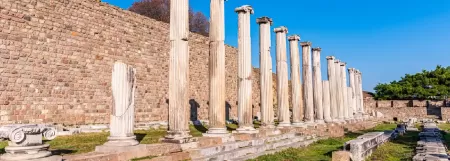
The Pergamon Asclepieion in Turkey was an ancient healing center, famous for its sacred springs and Roman medical treatments. Explore its historic ruins.
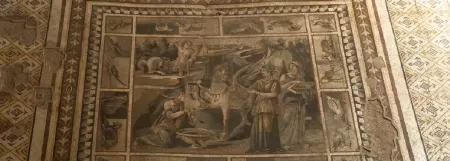
Hatay Archaeology Museum in Antakya houses Turkey’s largest Roman mosaic collection, along with artifacts from ancient civilizations.

Aphrodisias Museum in Turkey houses breathtaking ancient sculptures, Roman reliefs, and artifacts from the renowned city of Aphrodite.

Antalya Archaeological Museum showcases artifacts from Perge, Aspendos, and Termessos, featuring ancient sculptures, mosaics, and relics.

No visit to Sagalassos would be complete without a stop at the Archaeological Museum in Burdur. This museum, located just a short drive from the site, houses major discoveries from Sagalassos.

Located in one of the foremost valuable areas of the Aegean Region, Denizli Hierapolis Archeology Museum belongs to a part that has been continuously inhabited since antiquity.

Embark on a unique Cultural and Heritage tour at Haci Bektas Veli Museum, we’ll uncover the illuminating Sufi heritage that shapes Turkey’s land and history.

Explore the Galata Mawlawi House Museum, a key site in Istanbul highlighting Sufi mysticism and the Whirling Dervishes' unique history.

Step into the Rahmi M. Koç Museum in Istanbul, where industrial heritage comes to life with historic vehicles, ships, and interactive exhibits.
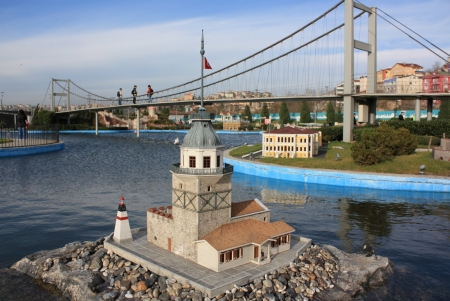
How about taking a fast tour through Turkey's major cities and sightseeing their landmarks? Located in Istanbul, Miniatürk is the world’s largest open air miniature museum
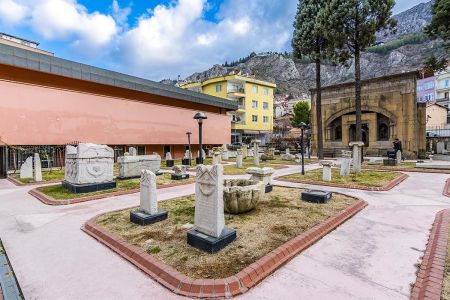
Explore Amasya Archaeological Museum, home to ancient artifacts and rare mummies from the Ilkhanid era.
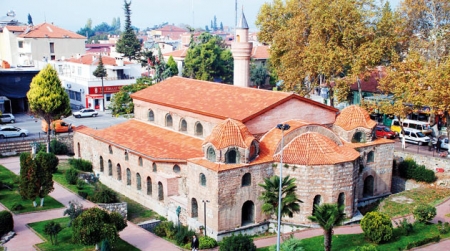
Discover Iznik Ayasofya, a historic Byzantine church-turned-mosque in Turkey, where the First Council of Nicaea once took place.

Explore Alacahoyuk Historic Site, an ancient Hittite city in Çorum with ruins, sphinx gates, and royal tombs and visit Alacahoyuk Museum to see remarkable artifacts.

Visit the Istanbul Military Museum to explore Ottoman weapons, war relics, and live Mehter Band performances in a historic setting!
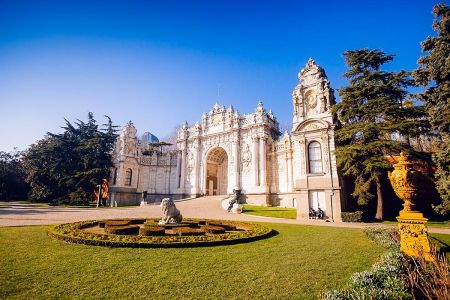
Step into Ottoman history at Yıldız Palace Museum, Istanbul’s royal complex with elegant halls, historic artifacts, and lush imperial gardens.
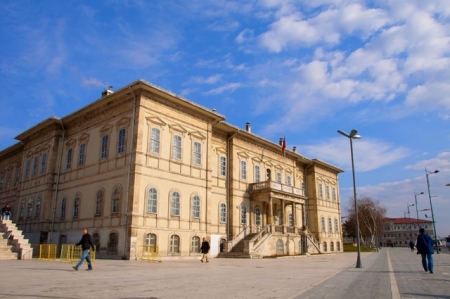
Visit Atatürk Congress & Ethnography Museum in Ankara, where Turkey’s National Struggle for Independence began in 1919. Explore its rich history!
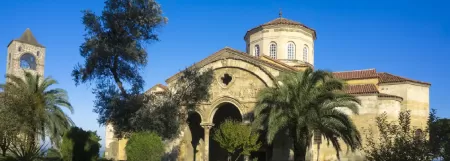
Trabzon Ayasofya Museum highlights Byzantine frescoes and rich history. Visit today to explore its stunning heritage and feel Trabzon vibes!
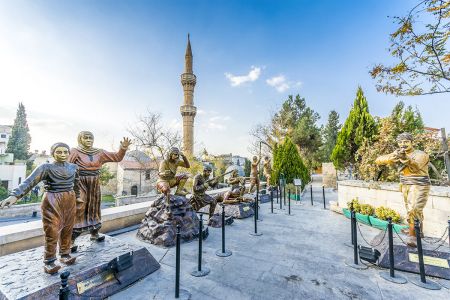
Established in Ankara, the capital of Turkey, the Museum of Anatolian Civilizations was awarded the Museum of the Year in 1997 by being chosen from among 68 museums.
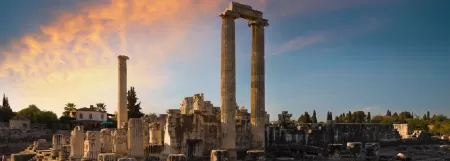
Uncover Didim, located in Aydın province, home to the ancient sanctuary of Didyma, known for the Temple and Oracle of Apollo, one of the most significant Hellenic ruins.

Visit Miletus Museum in Turkey and explore the ruins of an ancient Greek city once famed for trade, philosophy, and grand architecture!
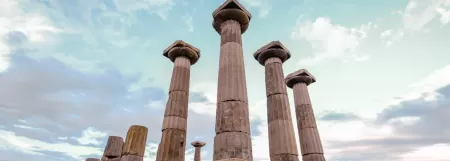
Assos Historic Site built in the 6th century BC in Çanakkale province, Assos was renowned in antiquity for its sarcophagi. Visit Assos and step into history!

Step into history at Troy, home of the legendary Trojan Horse! Uncover ancient ruins, city walls, and myths from Homer’s Iliad in Canakkale, Turkey.
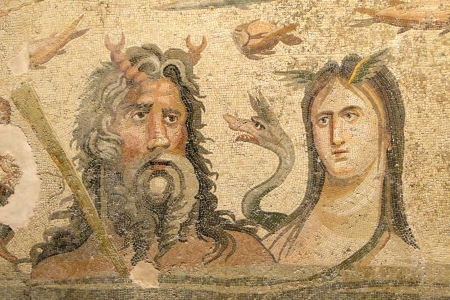
Zeugma Mosaic Museum, a treasure of ancient Roman art in Gaziantep, showcases stunning mosaics like the iconic Gypsy Girl and other breathtaking artworks.

Explore the Bodrum Museum of Underwater Archaeology, home to incredible shipwrecks, ancient artifacts, and maritime history in Turkey.

Discover the ancient Mausoleum at Halicarnassus, a masterpiece of architecture and one of the Seven Wonders.
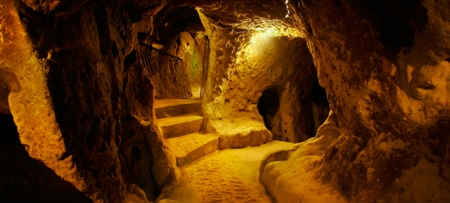
Discover the secrets of Derinkuyu Underground City in Cappadocia, a multi-level ancient wonder with tunnels, ventilation shafts, and hidden rooms.

Situated in Nevsehir province, Zelve houses the most number of the world-famous Fairy Chimneys. Zelve is an important Christian center since it is the place

Dating back to the 3rd century BC, the Acropolis in Izmir province has preserved many of its structures and works of art. Built on several levels of mounds, the ancient site of Pergamon Acropolis is extraordinarily rich

This museum in Izmir province houses the archeological finds from the site where one of the most sophisticated civilizations once thrived.

Among the best things to do in Istanbul visiting the Church, Mosque, and Museum Hagia Sophia the major attraction, The 8th Wonders of the World" of Turkey with Memphis Tours.
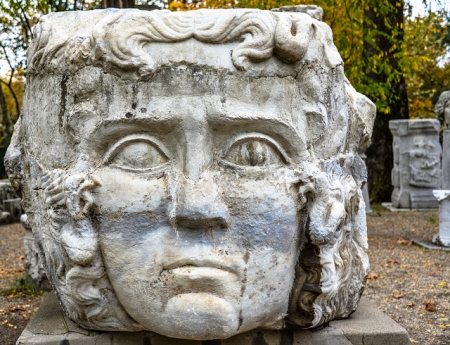
Built during the Ottoman era, the museum complex provided a background for the development of museology in Turkey. The buildings of the complex are themselves of historic significance.

This church is known to serve as the court chapel during religious ceremonies. This church carries the imprint of the typical Byzantine architecture.
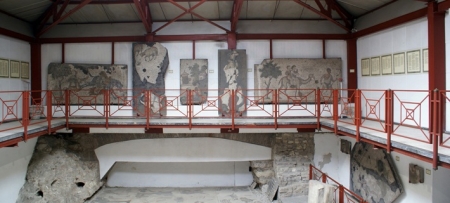
The Great Palace Mosaic Museum harbors the mosaics excavated from the courtyard of the Great Palace built during the Byzantine period.
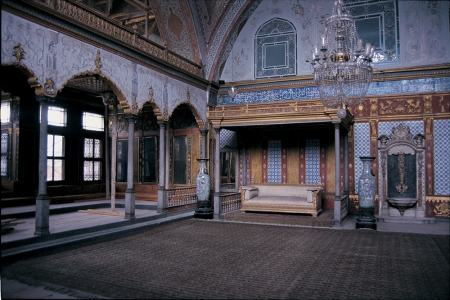
Built on a domineering point along the Bosphorus after the conquest of Istanbul, the palace is located on the tip of the historic peninsula.
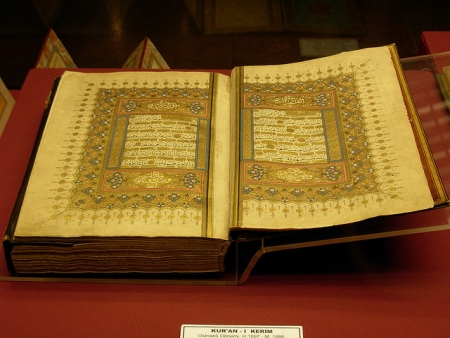
The construction of this first Turkish museum started in the 19th century within the confines of the Suleimaniye Mosque Complex.

The museum was originally a Rose Garden in the Seljuk Palace and was later presented as a gift to Rumi’s father and made a Dervish Lodge.

Opened to public in 2002, the museum is located below the Hall of Honor in Ataturk’s Mausoleum. In addition to exhibition pieces, visitors can also peek into Ataturk’s Private Library.

Built in one of the oldest neighborhoods of Ankara called Namazgah, the Ethnography Museum was also Ataturk’s first resting place for 15 years before Anıtkabir (Mausoleum).

Unique in the world with its rich collection of more than 35,000 pieces, Hatay Archeology Museum hosts the priceless mosaics known to history.


